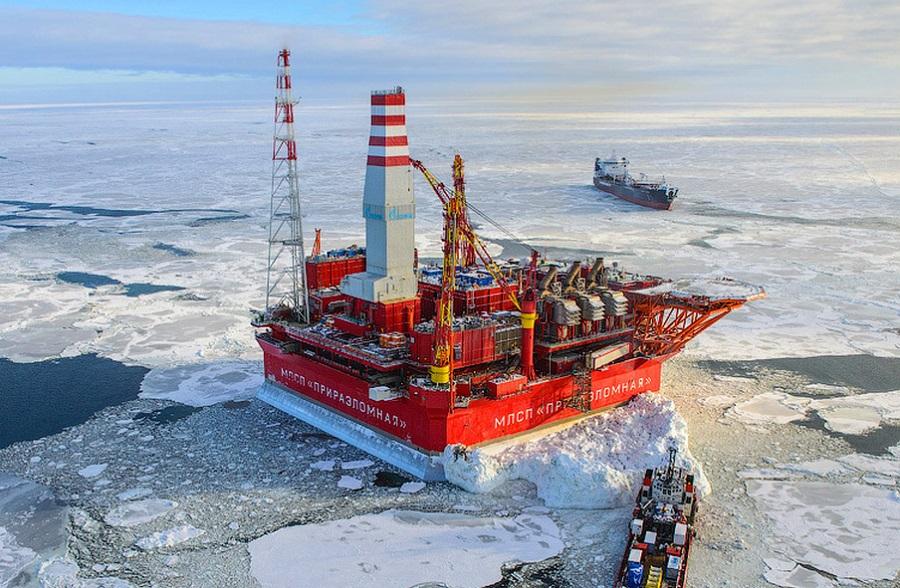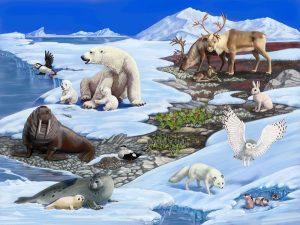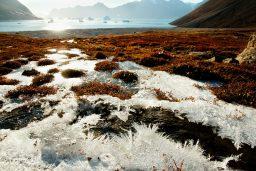
Natural resources of the Arctic
The Arctic is a real treasure trove of a wide variety of natural resources, and one of the most important is hydrocarbons. Oil, natural gas, and gas condensate are necessary both for industrial development and for private needs. Oil and gas fields are being developed on the shelf of the Barents Sea. These are such large oil fields as, for example, the Prirazlomnoye field.
There are gas condensate and oil and gas condensate fields where gas condensate is produced — a liquid mixture of hydrocarbons that is used both in the production of various fuels and for the production of synthetic rubbers and plastics.
In addition to hydrocarbons, the richness of the Arctic’s subsurface resources consists of deposits of precious, rare earth and non—ferrous metals – gold, nickel, copper, tungsten, uranium, platinum, palladium, molybdenum, coal, gypsum, diamonds and other stones.
However, the natural resources of the Arctic are concentrated not only in its depths. Fresh water reserves are located here, which, according to experts, account for up to a fifth of the global total. The resources of Russia in the Arctic are the territories themselves, which, with current climatic warming trends, may soon turn out to be suitable and even comfortable for human life and economic activity.
Environmental issues
The temperature in the Arctic drops below 40 °C because there is a constant influx of warm air from the ocean. But today the Arctic territory is under threat, its climate is considered the most vulnerable on the planet due to the constant warming.
With further warming, the Arctic will change the climate of the entire planet.
And not only because the melted massifs will flood many coastal areas of the other continents. In addition to the general increase in the level of the water area, we will not have a reflective mirror, and the dark waters of the oceans will begin to absorb the sun’s rays even faster.
The water will heat up to uncomfortable temperatures. Many plants and animals will not tolerate such overheating, the animals will simply die, since their lives are firmly connected with ice and snow.
The most powerful oil and gas developments are underway in the Arctic regions. Environmental pollution is already at the development stage, because drilling fluids are very toxic to the biosphere. During the extraction and transportation of minerals, they leak. The soil is getting dirtier.
Accidents occur periodically, and then oil stains spread, gas clouds flare up, ice becomes dirty, and great damage is done to the environment. Oil production platforms collide with icebergs. The Northern Sea Route attracts more and more attention every day.
It’s shorter, less congested. Interest in direct flights is constantly growing. Therefore, the northern air is increasingly saturated with processed products from various means of transport. In the course of the developing development of the Arctic regions, powerful machinery is being used, which emits a lot of exhaust gases.
Source: Arctic. The Earth’s ice cap. Kapustina O. Yu., Ispenkova N. Yu. – Snezhnogorsk, 2022 – 16 p.


